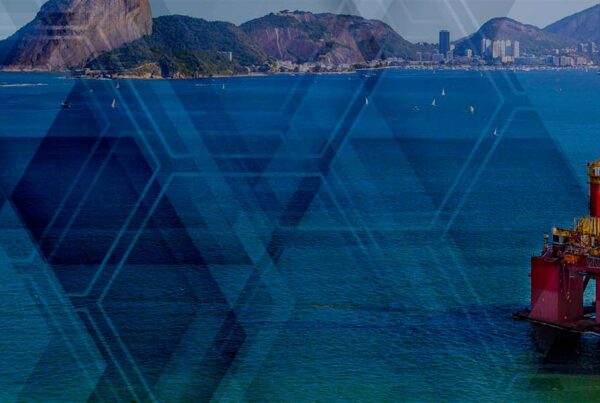Expectation of a slower, more realistic growth trajectory for the industry, with 54% anticipating less than 3GW capacity operational by 2030
London, UK, 29th May 2024: A survey by Westwood Global Energy Group (Westwood), the specialist energy market research and consultancy firm, reveals a lack of standardisation of floating technology (55%), manufacturing capability and capacity (51%) and port infrastructure (50%) as the most commonly cited major hurdles and risks to floating offshore wind progress, indicating a need for accelerated investment, regulation and supply chain co-ordination globally for the sector to achieve its ambitions.
The research, developed in partnership with Norwegian Offshore Wind and World Forum Offshore Wind (WFO), surveyed 184 floating offshore wind stakeholders on industry sentiment and attitudes across the value chain. Aligning with the hurdles, calls are ringing out for governments to provide more specific policy and regulatory support for technology development in addition to cost reduction and investment in port infrastructure to accelerate adoption.
General consensus deviates when it comes to the question of optimism, relative to two years ago, when ambitious targets were set for the development of the industry. 42% of European respondents are less optimistic about the floating offshore wind sector than they were two years ago, compared with 30% for non-Europe. Globally, 44% of developers are more optimistic about the sector than two years ago whereas that shrinks to just under a quarter of supply chain respondents, potentially pointing to a lag in projects coming to tender for their services.
Additional analysis from Westwood’s WindLogix solution notes that the recent market upheaval caused primarily by cost inflation, together with the subsequent re-focusing of developer strategies, will mean global floating offshore targets will all be missed. The majority of respondents (54%) expect <3GW of global capacity to be operational by 2030, with Europe reaching 0.5-2GW in the same timeframe (61%).

How much floating wind capacity do you anticipate will be operational by 2030 and 2040 respectively? Source: Westwood Floating Offshore Wind Survey 2024, Question 2,3
David Linden, Head of Energy Transition, Westwood said: “These are significant and familiar challenges for an industry in infancy, as first-movers look to establish reliable supply chains and weigh up investment risk. But despite these known obstacles and a more realistic picture of near-term growth, optimism hasn’t wavered as much as anticipated. The enthusiasm accompanying the flurry of activity following the 2022 leasing rounds and target setting has naturally waned, but our survey results demonstrate the appetite in the sector.
Right now, it’s a question of pace. While the UK is still heralded as a clear front runner of floating offshore wind’s future, chosen by 71% of responders, it needs to deliver. We’re also seeing South Korea and China building out their respective supply chains, and other countries such as France making some bold commitments, resulting in diverse views on the achievable pace of growth in the run up to 2040. Direct investment in infrastructure and technology coupled with more focused policy are likely to be pivotal pace setters.”
Arvid Nesse, CEO, Norwegian Offshore Wind concluded: “Right now, most respondents remain confident, but realistic, about the potential for floating wind. But we need to build manufacturing capability and capacity. And we also need to invest in infrastructure and port capacities. To accelerate the investments in these capacities, the investors need to see a plan from the governments in the countries where floating wind is most relevant. Such a plan must indicate volumes and a timeline. The pressure is really on for governments to step up and de-risk projects by speeding up permitting and establish financial support mechanisms.”
Released today at Norwegian Offshore Wind’s Floating Wind Days in Haugesund, Norway, Westwood’s full Floating Offshore Wind Survey 2024 is available for download here.
ENDS
About Westwood Global Energy Group
The energy landscape is changing; and Westwood Global Energy Group is evolving in-step to answer the strategic, commercial and technical questions industry stakeholders face each day. As trusted advisors to companies in key energy transition and oil and gas sectors, Westwood Global Energy Group scrutinises and integrates parts of the energy system that others don’t.
From Northwest Europe E&P and energy transition technologies to global exploration and offshore and subsea equipment, we dig deeper, reach further and join up previously unconnected information to help our clients thrive through the energy transition. From the depth of our data to the insight from our industry experts, our commercial advisory to our quantitative techniques and databases – we insist on excellence in everything we do.
Westwood Global Energy Group is headquartered in London and has offices in Aberdeen, Houston and Singapore.
About Norwegian Offshore Wind
Norwegian Offshore Wind (NOW) with close to 400 member companies has a mission to develop world leading supply chains within floating wind. NOW members range from small startups to multinational companies.
Norwegian Offshore Wind grew out of the Marine Energy Test Centre (METCentre). This is where the world’s first floating wind turbine was installed already in 2009 and is still running today. In just a few years, the Norwegian offshore wind industry has grown rapidly, and so has NOW that currently represents both supply chain companies and developers. As such NOW has a strong voice in both political and industrial arenas in Norway.
About WFO
World Forum Offshore Wind (WFO) is the world’s only organisation 100% focused on promoting offshore wind energy on a global scale. WFO is registered as a non-profit organisation (e.V.) in Germany, with offices in Hamburg, Tokyo, Taipei and New York. WFO’s international members represent the complete offshore wind value chain including utility companies, manufacturers and service companies as well as other non-profit organisations. WFO’s unique global profile facilitates access to governmental and international forums in order to open new offshore wind markets and advocate for global offshore wind growth.
Media contact
Victoria Chilton, Aspectus Group
[email protected]
m: + 44(0)7546566966




